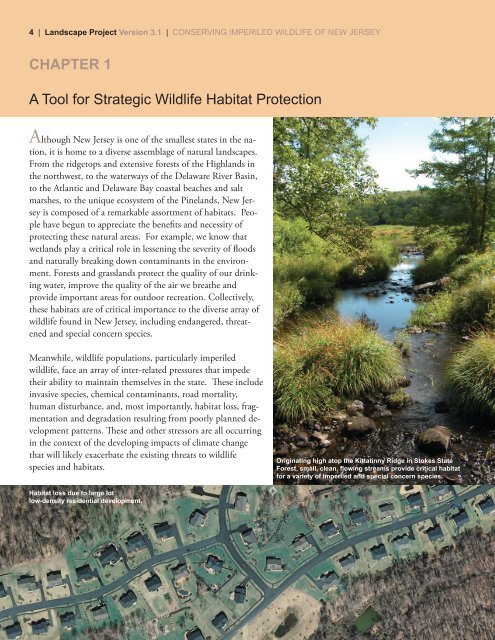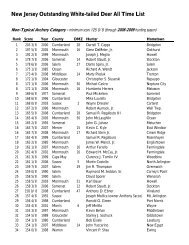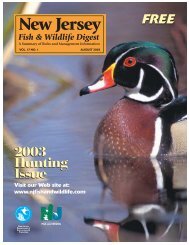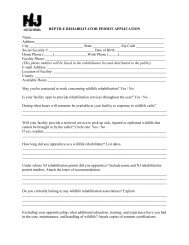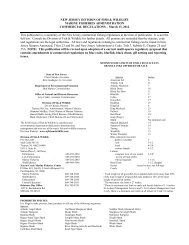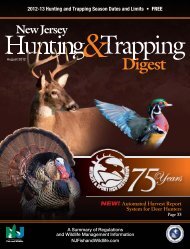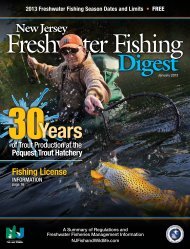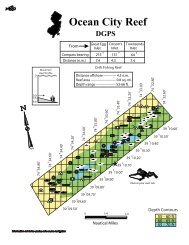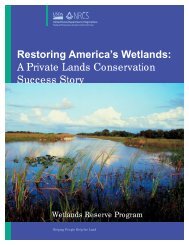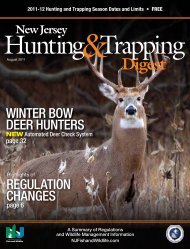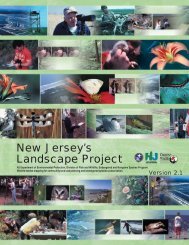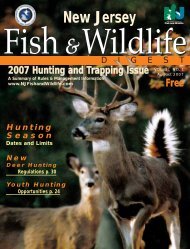Landscape Project Version 3.1 - State of New Jersey
Landscape Project Version 3.1 - State of New Jersey
Landscape Project Version 3.1 - State of New Jersey
You also want an ePaper? Increase the reach of your titles
YUMPU automatically turns print PDFs into web optimized ePapers that Google loves.
4 | <strong>Landscape</strong> <strong>Project</strong> <strong>Version</strong> <strong>3.1</strong> | CONSERVING IMPERILED WILDLIFE OF NEW JERSEYCHAPTER 1A Tool for Strategic Wildlife Habitat ProtectionAlthough <strong>New</strong> <strong>Jersey</strong> is one <strong>of</strong> the smallest states in the nation,it is home to a diverse assemblage <strong>of</strong> natural landscapes.From the ridgetops and extensive forests <strong>of</strong> the Highlands inthe northwest, to the waterways <strong>of</strong> the Delaware River Basin,to the Atlantic and Delaware Bay coastal beaches and saltmarshes, to the unique ecosystem <strong>of</strong> the Pinelands, <strong>New</strong> <strong>Jersey</strong>is composed <strong>of</strong> a remarkable assortment <strong>of</strong> habitats. Peoplehave begun to appreciate the benefits and necessity <strong>of</strong>protecting these natural areas. For example, we know thatwetlands play a critical role in lessening the severity <strong>of</strong> floodsand naturally breaking down contaminants in the environment.Forests and grasslands protect the quality <strong>of</strong> our drinkingwater, improve the quality <strong>of</strong> the air we breathe andprovide important areas for outdoor recreation. Collectively,these habitats are <strong>of</strong> critical importance to the diverse array <strong>of</strong>wildlife found in <strong>New</strong> <strong>Jersey</strong>, including endangered, threatenedand special concern species.Meanwhile, wildlife populations, particularly imperiledwildlife, face an array <strong>of</strong> inter-related pressures that impedetheir ability to maintain themselves in the state. ese includeinvasive species, chemical contaminants, road mortality,human disturbance, and, most importantly, habitat loss, fragmentationand degradation resulting from poorly planned developmentpatterns. ese and other stressors are all occurringin the context <strong>of</strong> the developing impacts <strong>of</strong> climate changethat will likely exacerbate the existing threats to wildlifespecies and habitats.Originating high atop the Kittatinny Ridge in Stokes <strong>State</strong>Forest, small, clean, flowing streams provide critical habitatfor a variety <strong>of</strong> imperiled and special concern species.Habitat loss due to large lotlow-density residential development.


